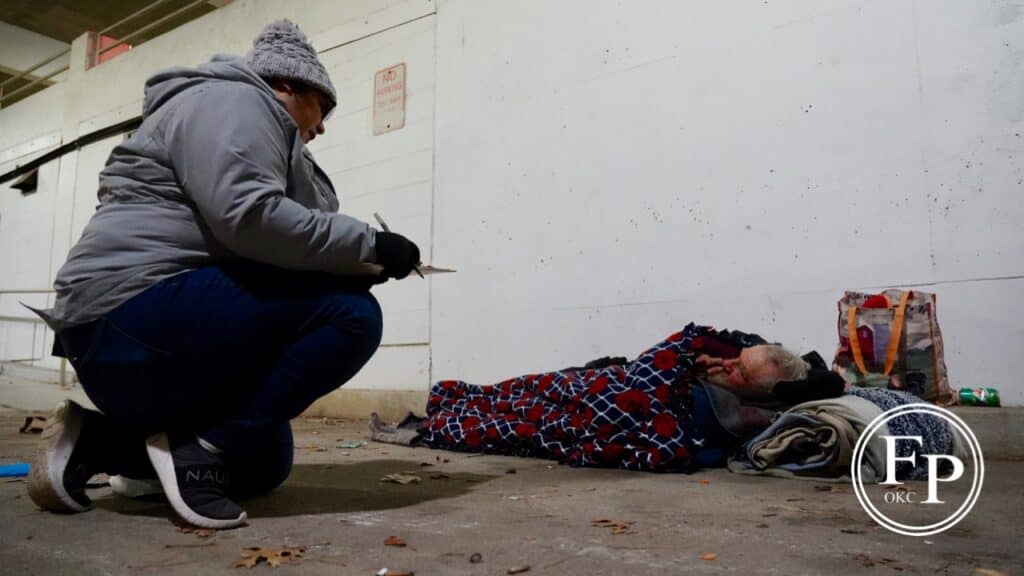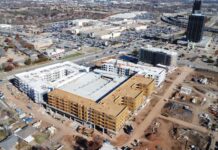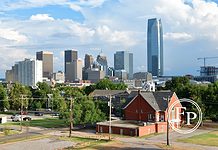OKLAHOMA CITY (Free Press) — What began as an obvious and growing concern about the need for affordable housing opportunities for Oklahoma City’s increasing homeless population has spiraled into a full-blown crisis amid exploding development and high-demand markets.
As the city’s residential development continues steadily rising with high-end apartments and freshly renovated inner city neighborhoods, so too has the visibility of the homeless population increased as housing options rapidly dwindle and support programs see unsustainable numbers and ballooning wait times.
As the City of OKC’s Homeless Services department begins compiling its 2022 Point In Time count of the city’s homeless numbers (the first such count in two years as the pandemic waylaid the effort in 2021,) city residents and outreach workers alike wait to see exactly how the numbers have changed since the onset of COVID, and how dramatically that change will affect housing efforts.
“They’re referring to America’s housing issue as an ‘affordable housing crisis’ now, and it really is,” said Jerod Shadid, City of Oklahoma City’s program planner for homeless services. “People think that Oklahoma City is an outlier, but it’s not. Our minimum wage is still around $7 an hour, and yet the cost of housing continues to increase. Even the ‘low income’ units do.”

Cooperation lacking
Though the continued development and expansion all across the city, particularly in many formerly longstanding lower income areas, has contributed to rocketing property rates and housing costs, Shadid doesn’t see that as the biggest issue currently facing his department.
The most immediate concern, he said, is a surprising lack of cooperation from landlords.
“We’ve kind of reverted to a unique problem in the last couple of years where you’re not just seeing the typical affordability issues,” he explained. “You see a lot of people that typically might be able to afford a unit with our assistance programs, like the vouchers that we offer, but they’re finding that landlords aren’t wanting to work with anyone with those programs. They’re just saying no. Even people that otherwise might have worked with those programs in the past, now they’re just not.”
Shadid suspects that the massive recent influx of young professionals into the city is driving up demand for housing from tenants that don’t require housing assistance or vouchers.
“What I’m hearing from our service providers out there is that these landlords and managers think, with the demand, that they don’t really have to work with us anymore,” he said. “Previously, maybe they would have been a really good option for these programs, but now if they can get someone in there that they view as more stable, even if that’s not really true, then they think that’s better and easier for them.”
Higher-End Development
As certain areas of the city continue seeing growth and interest among young, higher wage renters and prospective buyers, many developers are rushing to quickly meet that demand with the kind of modern, high-end apartments and houses that are likely to remain unobtainable for vouchered renters earning only a fraction of the AMI, or area median income.

“Areas like the Paseo and around 23rd, now that that’s blown up, property development has gone up over there,” Shadid said. “You can see those units. Most of those are not going to be available for people making 50% of the area median income. So it’s had a big effect there just because of the type of units that are being developed.”
Most affordable housing units and assistance programs are based on that metric of AMI, determining where a renter’s income falls within the overall income range of an area in the city. Housing developers can be granted major tax incentives for offering a certain percentage of units in their properties to tenants making less than 50% of the AMI for the neighborhood, but more expensive development projects generally result in much higher rents far outside the 50% and under AMI range.
With fewer units available to low wage renters in and around the downtown and inner city areas, most are seeking housing closer to the south and east sides of OKC.
“It’s had an effect definitely in the middle of downtown,” said Shadid, “and it does appear to be pushing things further and further out.”
Betting on Higher Values
Another growing problem resulting from the city’s steadily increasing property valuations is an increase in the number of properties being left abandoned or condemned while owners wait for property values to further rise before selling, rather than renovating for affordable housing options.
“You drive around the city and you’ll see that they’re actually not demolishing a lot of the units, they’re just sitting on them,” Shadid explained. “A lot of areas, like south of downtown, they’re just waiting for the property values to go off so they can sell at an escalated price.”
This practice has been observed directly by Shadid and his team when scouting properties for potential new affordable units.
“We’ve looked at a couple of the same properties for projects over the last five or six years,” he said. “One was about 1 million when we first looked at it. Now it’s about 4 million they’re asking for it, indicating that that’s a reasonable market price. And that’s not an outlier. That’s not the most astronomical cost compared to some others we’ve talked to.”
“Housing First”
The 2020 OKC Point In Time count claimed that the city was lacking “more than 4,500 affordable housing units,” a deeply conservative estimate by Shadid’s measure, and with the passage of the MAPS 4 program in late 2019, the report declared optimistically that “help is coming this decade” with $50 million allocated for a “housing first” solution to homelessness.
That was before COVID, before mass layoffs, widespread evictions, and spiraling homeless numbers nationwide that have only become more and more visible over the past two years.
We won’t have a clearer picture of the damage that the pandemic has done to homeless numbers and housing efforts until the 2022 Point In Time report is published later this summer, but Shadid and Homeless Services, along with partners in the Homeless Alliance and the Coalition to End Poverty, are bracing for the worst.
According to Shadid, this issue doesn’t concern only the increasingly visible homeless citizens of the city. With stagnated wages and housing options drying up, there are potentially thousands of residents in OKC on the verge of homelessness.
“I would love to see more attention on affordable housing and not just homelessness,” he told me. “There’s frequently a disconnect between those two. It’s not just people on the street, that’s not the only people who are affected. You’re not going to solve that problem without this problem over here being fixed.”
Brett Fieldcamp is our Arts and Entertainment Editor. He has been covering arts, entertainment, news, housing, and culture in Oklahoma for 15+ years, writing for several local and state publications. He’s also a musician and songwriter and holds a certification as Specialist of Spirits from The Society of Wine Educators.










